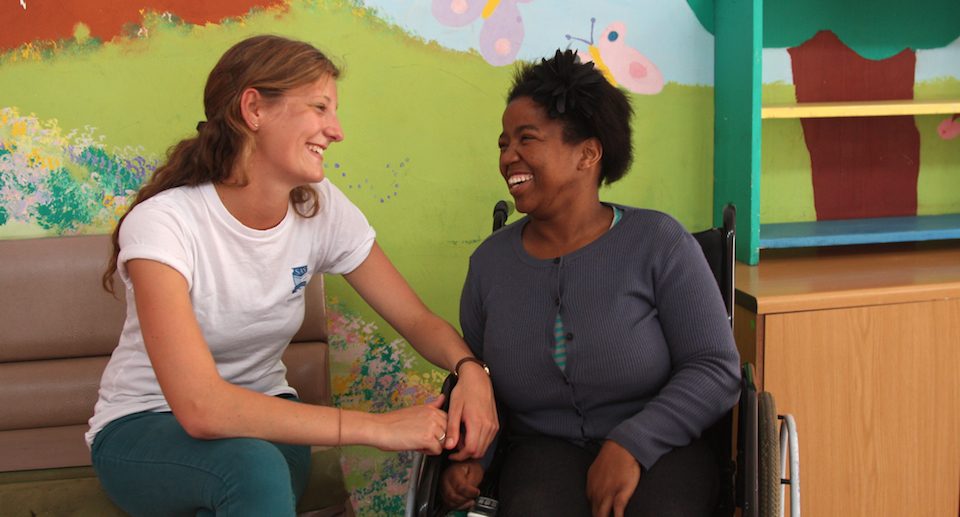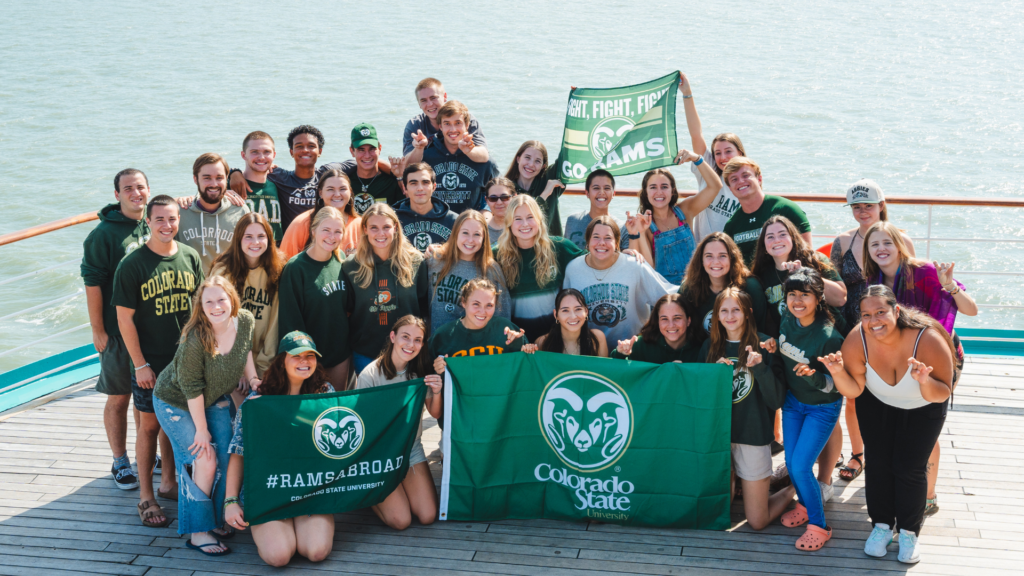
I knew the students in Professor Joan Strouse’s Globalization and Social Responsibility course were curious and engaged, but it wasn’t until I watched them interact with a local community in South Africa that I was able to see them truly shine. I had the privilege of leading the students in a conversation a few weeks back as a guest lecturer about the challenges of international aid, and during that discussion they showed an impressive level of reflection and thoughtfulness on the subject. But how would they respond when faced with the opportunity to apply their classroom knowledge about social responsibility in a real world setting? How would they feel when confronted with poverty in such an intimate way?
I decided to join them on their recent field lab to a South African township to witness their experience firsthand. As our bus made the fifteen minute drive from Cape Town’s beautiful waterfront to the Langa Township, it was easy to see what our guide, Jerry, meant when he said that we were traveling between “two different worlds.” Despite being close in proximity, the two places couldn’t be further apart. Langa is one of Cape Town’s oldest townships, and is best known for the significant role its residents played in the anti-apartheid struggles. As we saw throughout the day, the people of Langa are intensely proud of their community, but they are also facing staggering challenges when it comes to poverty, unemployment, violence, and a host of other issues.
As soon as we arrived in the township, Joan’s class seemed eager to engage deeply with the community. The group spent part of the day volunteering at the Cheshire Home for disabled adults, and I was proud to see the way they interacted in such humble and compassionate ways with the wheelchair-bound residents. The students prepared lunch for them, planted a new vegetable garden out back, and took some of their new-found friends for a spin around the block in their wheelchairs.
Laura Miess of Western State Colorado University seemed hesitant at first about what to say or how to act around disabled people, but she soon found the courage to open up. Before long she was deep in conversation with one of the residents (who was both mentally and physically disabled) talking with him about everything from family to politics. “I talked to him for a very long time,” she said. “It took me a lot of patience. We both sat there and tried so hard to understand each other. Looking back I see how I grew throughout the day; from being really uncomfortable at first, to the end where I was actually feeding him his lunch with my hands.” I watched from a distance as Laura carefully fed her new friend his lunch (since his paralysis prevented him from being able to do it himself), and the comfort of her interaction made me certain she must have inherited some kind of Mother Teresa gene. It was only days later during the class debrief that she admitted that she’d never done anything like that before and had started out feeling unsure about how to engage. Her classmates, who had all been amazed by her level of connection with the residents at the Cheshire home, couldn’t believe it. “I remember throughout the day watching you interact and thinking how beautiful it was, and thinking I wish I was as comfortable as you were,” Laura’s classmate, Erika Shaid, said. It warmed my heart to know that Laura, along with so many other students, had stepped out of their comfort zones so much during the field lab and were rewarded with genuine moments of human connection.
In addition to being able to connect with the people of Langa, the students also had an opportunity to practice developing empathy for others. Although it’s impossible for any outsider to fully comprehend what life is really like in the township, students tried to temporarily put themselves in the shoes of the people they were meeting. They took a walking tour of the township to witness what life is like there, conversed with our two local guides who provided endless insights, and spent time at one of the poorest housing complexes in Langa interacting with children who were part of an after school dance troop. For Taylor Mason from Wiley College (who said that Langa wasn’t much different from the neighborhood she grew up in) having empathy, especially for the residents at the Cheshire home, was easier than she expected. I walked with Taylor along the streets of the township as she pushed a woman named Maria in her wheelchair. Taylor told me about her great aunt who had recently had a stroke just before she left for Semester at Sea, and the way she had to take care of her. I was touched as Taylor looked down at Maria and said to me, “I see my aunt in a lot of these faces. And I think to myself, this could be me. I’ve been in a position before where I’ve had to lean on others for my wellbeing.”
These were only a few of the many moments that day that truly touched me, allowing me to see what mature and caring students I’m traveling around the world with. I remember being in their position a decade ago, struggling with my own perceptions of poverty, while also trying to understand what role I might play in the future to help make a difference. And while the challenges facing the world can sometimes feel overwhelming to these students, and the desire to do something grows stronger as we visit each port, I remind them that what they're doing now is so important: experiencing the world first as learners (not as helpers), bearing witness to the challenges facing the people they meet, and honing their skills in empathy, engagement, and human compassion. The students in Joan Strouse’s class are already well on their way to developing these skills, and I’m looking forward to watching their continued growth throughout the rest of the voyage.



